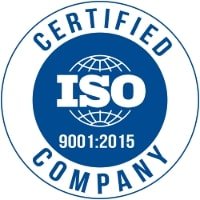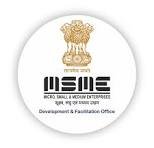
Apply TEC Certificate in India Process, Documetns, Online
Introduction of TEC Certificate
Since the early 2000s, the telecommunications industry has experienced rapid liberalization and innovation, shaping the way data is transmitted globally through various mediums such as words, voice, audio, and video. The telecommunications sector comprises three fundamental sub-sectors: telecom equipment, telecom services, and wireless communication.
The journey of telecommunications traces back to the 1830s with the invention of the first mechanical gadget, the Telegraph. This invention marked the beginning of the telecommunication industry, which has since evolved significantly with technological advancements. To uphold the progress of the telecom sector, the Government of India established the Telecommunication Engineering Centre in 1991. This department is tasked with developing standards for the telecommunications sector, ensuring the establishment of world-class networks and seamless connectivity across individual networks.
TEC Certificate: A Requirement for Telecom Equipment A TEC (Telecommunication Engineering Centre) certificate is indispensable for dealers involved in importing, manufacturing, and selling telecom equipment. This certificate is issued by the Telecommunication Engineering Centre following testing under the MTCTE (Mandatory Testing and Certification of Telecom Equipment) scheme.
Upon completion of the TEC registration process, a unique registration number is assigned to the equipment. This number serves as a distinctive identifier for the equipment. Displaying the TEC certification prominently on the product assures customers of its authenticity and compliance with regulatory standards.
What is TEC Approval
TEC stands for Telecommunication Engineering Centre. TEC assists the Government of India's Department of Telecommunications (DoT) in the development and implementation of different standards and policies for the safe and secure use of emerging technologies in telecommunications. TEC India has published specifications for telecom equipment quality measures. Generic Requirements (GRs), Interface Requirements (IRs), and Service Requirements are the three types of specifications (SR).
Types of Voluntary Testing Certification
TEC India offers various approvals catering to different types of telecom products and interface technical standards. These certifications are based on specific testing parameters and compliance conditions outlined in the Technical standards. The main types of voluntary testing certification offered by TEC include:
1. Type Approval:
- Type Approval involves testing and certifying a telecom product according to TEC's Test Schedule & Test Procedure (TSTP) to ensure compliance with the Standard for Products/Equipment. Testing is conducted either on-site at the OEMs premises or in a lab environment. Test reports for EMC, Safety, Environmental Testing, etc., from ILAC signatory accredited labs, are also accepted.
2. Interface Approval:
- Interface Approval entails testing and certifying a telecom product based on TEC's Test Schedule & Test Procedure (TSTP) to ensure compliance with the Standard for Products/Equipment. Similar to Type Approval, testing can be conducted on-site at the OEMs premises or in a lab environment. Test reports from accredited labs for EMC, Safety, Environmental Testing, etc., are also accepted. Interface Approval may be mandated by license requirements, government agencies, or service providers.
3. Certificate of Approval:
- Certificate of Approval (CoA) is issued when TEC does not have a Generic or Interface Requirement for a specific product. This certificate is granted based on testing conducted on-site at the OEMs premises or in a lab environment. Test reports from accredited labs for EMC, Safety, Environmental Testing, etc., are accepted.
4. Technology Approval:
- Technology Approval involves testing and certifying a prototype of a telecom product developed by C-DoT or other R&D organizations. This approval is granted in accordance with the product's associated standard provided by TEC. Testing can be conducted on-site at the OEMs premises or in a lab environment. Test reports from accredited labs for EMC, Safety, Environmental Testing, etc., are also accepted.
Products Under TEC Approval
- HF Radio
- IP Multi Media Conferencing Equipment
- IP Security Equipment
- LAN Switch
- GPON
- Media Converter
- Media Gateway
- Mobile Radio Trunking System
- Optical Fibre (Single Mode)
- Point Of Sales Devices
- Repeater For Cellular Network
- SoftSwitch
- Smart Electricity Meter
- Router
- PON Family of Broadband Equipment
- Session Border Controller
- Wifi Access Point
- 2 - Wire Telephone
- Transmission Terminal Equipment DWDM DXC
Mandatory Testing and Certification of Telecom Equipment (MTCTE)
In accordance with the Indian Telegraph (Amendment) Rules, 2017, it is mandatory for every telecom equipment to undergo testing and certification before being sold, imported, or used in India. This requirement ensures that the equipment conforms to Essential Requirements (ER) specified for the equipment.
Testing for compliance with the Essential Requirements (ER) is conducted by Indian Accredited Labs designated by the Telecommunication Engineering Centre (TEC). Based on the test reports provided by these accredited labs, a TEC certificate is issued by the Telecommunication Engineering Centre. This certification signifies that the telecom equipment meets the necessary standards and regulatory requirements for operation in India.
- Products Covered Under Phase I Of Mtcte:
- Products Covered Under Phase Ii Of Mtcte:
- Products Covered Under Phase Iii Of Mtcte:
- Products Covered Under Phase Iv Of Mtcte:
- Products Covered Under Phase V Of Mtcte:
Requirements
- Authorized Signatory from Authorized Indian Company.
- In case of Foreign OEM: Foreign OEM needs to appoint an Indian Company to act as Representative for the MTCTE certification procedure. MoU between foreign OEM and Indian Representative.
- In the case of Indian Manufacturer: Manufacturer based in India needs to provide their legal documents for the registration on the portal.
- Product with Valid Test report from Indian labs approved by TEC.
- Brand / Trademark Details.
- Company Registration.
To obtain TEC certification in India for telecommunication equipment, you need to follow these steps:
1. Online Portal Generation on MTCTE Portal: Register on the MTCTE portal to obtain login credentials.
2. Application Submission with Relevant Documents: Fill in all necessary information and upload required documents on the MTCTE portal. Once submitted, documents cannot be changed.
3. Scrutiny of Application: The Telecommunication Engineering Centre (TEC) will evaluate the documents. Any deficiencies will be communicated to the applicant for correction.
4. Application Submission for Testing/Certification: Select the product for certification, provide variant details, interface information, and manufacturing locations. Pay the applicable testing fee.
5. Testing of Product: Choose a designated or recognized Conformity Assessment Body (CAB) for testing. The telecom/ICT equipment must undergo testing at the selected CAB.
6. Submission of Test Report: After testing, upload the test report on the portal along with a summary of the test results. Accept an online undertaking about the correctness of the uploaded documents/reports.
7. Scrutiny of Test Report: TEC will review the submitted test results. If the equipment is found compliant, a certificate will be granted.
8. Grant of Certificate: TEC will issue the certificate if satisfied with all test reports and equipment compliance.
Documents Required for Mandatory Testing & Certification of Telecommunication Equipment:
- - Company Registration Document
- - Authorization Letter issued by the company
- - Articles of Association (AoA) signed by Director or CS
- - Memorandum of Association (MoA) signed by Director or Company Secretary
- - Latest Shareholding Pattern
- - MoU between foreign OEM and Indian representative (AIR)
- - Authorization for the AIR for MTCTE related responsibilities
Timeline:
The certification procedure may take around 60 days, varying depending on the product category and required tests.
Cost:
The cost of TEC Registration Certificate for equipment varies based on the group of equipment, including administrative fee and test report evaluation fee.
By following these guidelines and submitting the required documents and fees, you can obtain TEC certification for your telecommunication equipment in India.
| Group of Equipment | Administrative Fee | Test Report Evaluation Fee |
|---|---|---|
| A | INR 10,000/- | INR 50,000/- |
| B | INR 20,000/- | INR 1,00,000/- |
| C | INR 30,000/- | INR 2,00,000/- |
| D | INR 50,000/- | INR 4,00,000/- |
Cost:
| SNo. | Product Name | Group | Scheme |
|---|---|---|---|
| 1 | 2 Wire Telephone Equipment | A | SCS |
| 2 | Conferencing Equipment | A | SCS |
| 3 | Conferencing and Presentation Equipment | B | GCS |
| 4 | Group 3 Fax Machine | A | SCS |
| 5 | Modem | A | SCS |
| 6 | Point of Sale Devices (POS) | A | GCS |
| 7 | Cordless Telephone | A | SCS |
| 8 | PON Family of Broadband Equipment | B | SCS |
| 9 | Media Converter | B | GCS |
| 10 | IoT Gateway with Cellular Connectivity | B | GCS |
| 11 | End Point Device for Environmental Monitoring | B | GCS |
| 12 | Feedback Devices | B | GCS |
| 13 | Tracking Device | B | GCS |
| 14 | Smart Electricity Meter | B | GCS |
| 15 | Smart Watch | B | GCS |
| 16 | Smart Camera | B | GCS |
| 17 | HF Radio | C | GCS |
| 18 | Router | C | SCS |
| 19 | LAN Switch | C | SCS |
| 20 | Mobile User Equipment | C | GCS |
| 21 | Mobile BTS (Base Station for Cellular Network) | C | GCS |
| 22 | Compact Cellular Network | C | GCS |
| 23 | Repeater for Cellular Network | C | GCS |
| 24 | VHF UHF Radio System Equipment | C | GCS |
| 25 | Mobile Radio Trunking System | C | GCS |
| 26 | Equipment Operating in 2.4 GHz and 5 GHz Bands | B | SCS |
| 27 | Satellite Communication Equipment | C | GCS |
| 28 | IP Terminal | B | GCS |
| 29 | Media Gateway | C | GCS |
| 30 | Signalling Gateway | C | GCS |
| 31 | Session Border Controller | C | GCS |
| 32 | SoftSwitch | C | GCS |
| 33 | ISDN Customer Premises Equipment | A | SCS |
| 34 | Private Automatic Branch Exchange (PABX) | B | SCS |
| 35 | Transmission Terminal Equipment-1 | C | SCS |
| 36 | DSL Equipments | B | GCS |
| 37 | Infiniband Switch | C | GCS |
| 38 | IP Multimedia Conferencing Equipment | B | GCS |
| 39 | IP Security Equipment | C | GCS |
| 40 | Optical Fibre Cable | C | GCS |
| 41 | Precision Timing Protocol Grand Master Equipment | C | GCS |
| 42 | PTP PMP Microwave Fixed Radio Systems | C | GCS |
| 43 | Mobility Management Entity | C | GCS |
| 44 | SGSN or GGSN | C | GCS |
| 45 | BSC RNC | C | GCS |
| 46 | Cell Broadcast Centre | C | GCS |
| 47 | GMLC | C | GCS |
| 48 | HLR AUC HSS | C | GCS |
| 49 | MSC or MSC-S or GMSC or GMSC-S including VLR | C | GCS |
| 50 | OTA and DM or FOTA | C | GCS |
| 51 | Service Control Point (SCP) | C | GCS |
| 52 | 5G Core | C | GCS |
| 53 | OMC or EMS or NMS or OSS | C | GCS |
| 54 | S-GW or P-GW | C | GCS |
| 55 | SMSC | C | GCS |
| 56 | EIR | C | GCS |
| 57 | SIM | C | GCS |
| 58 | SMLC or eSMLC | C | GCS |
| 59 | Server | B | GCS |
| 60 | Hypervisor | B | GCS |
| 61 | Radio Broadcast Receiver RBR | B | GCS |
| 62 | Optical Fibre - Single Mode | C | GCS |
| 63 | Converged Multiservice Application Access Equipment | B | GCS |
| 64 | Hybrid Set Top Box | B | GCS |
| 65 | Mobile Management Entity | C | GCS |
| 66 | All Interfaces | D | GCS |
| 67 | Transmission Terminal Equipment-2 | C | GCS |









